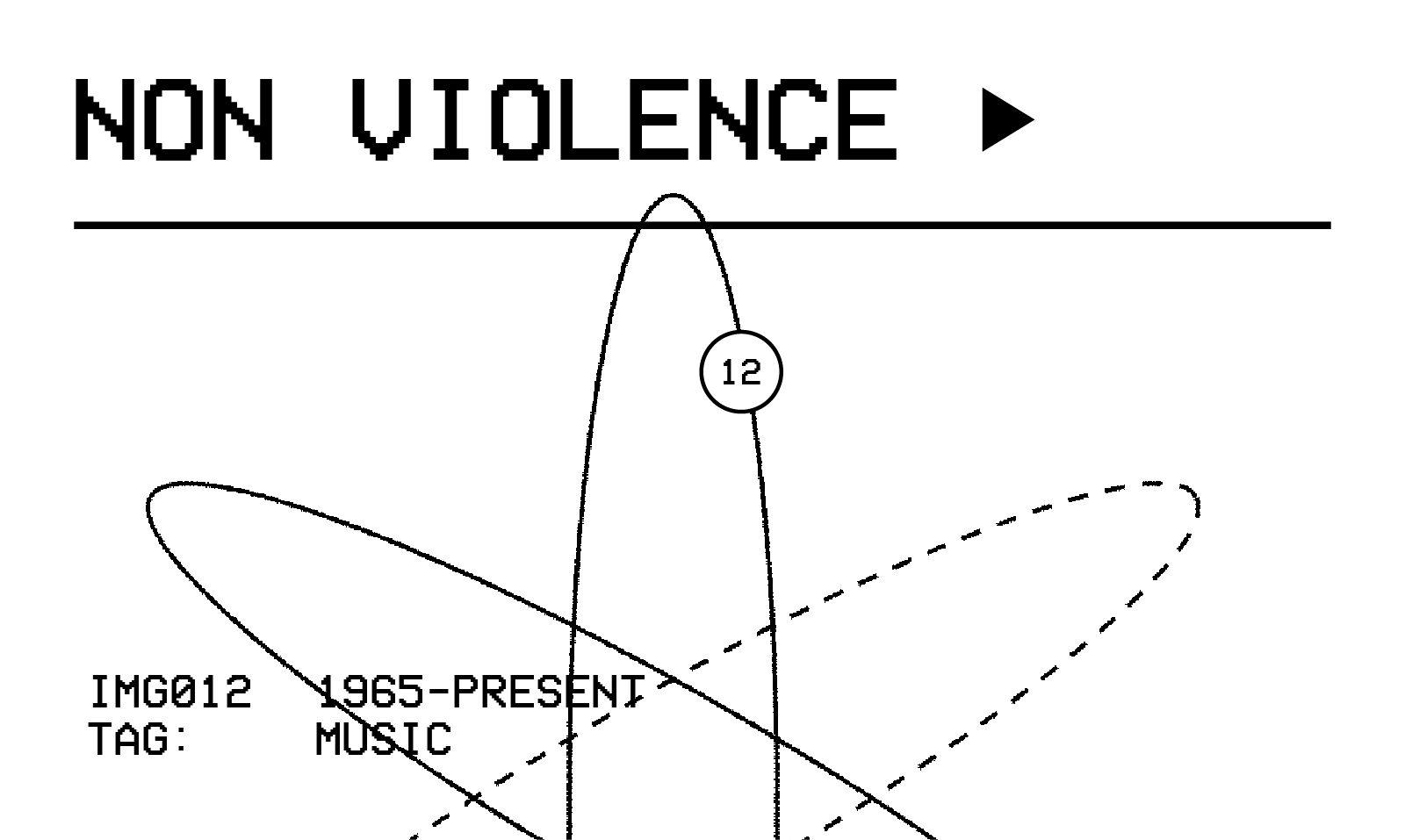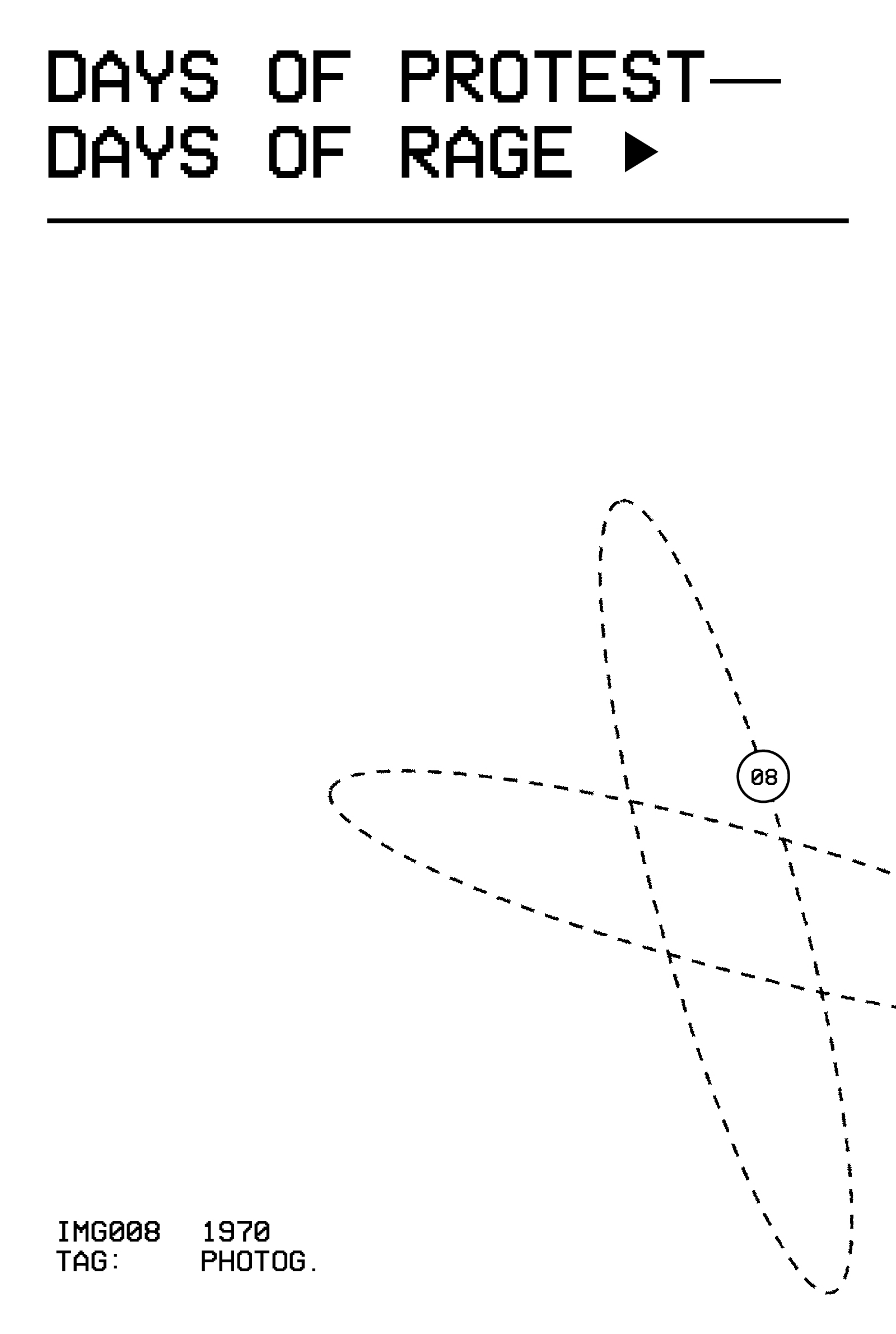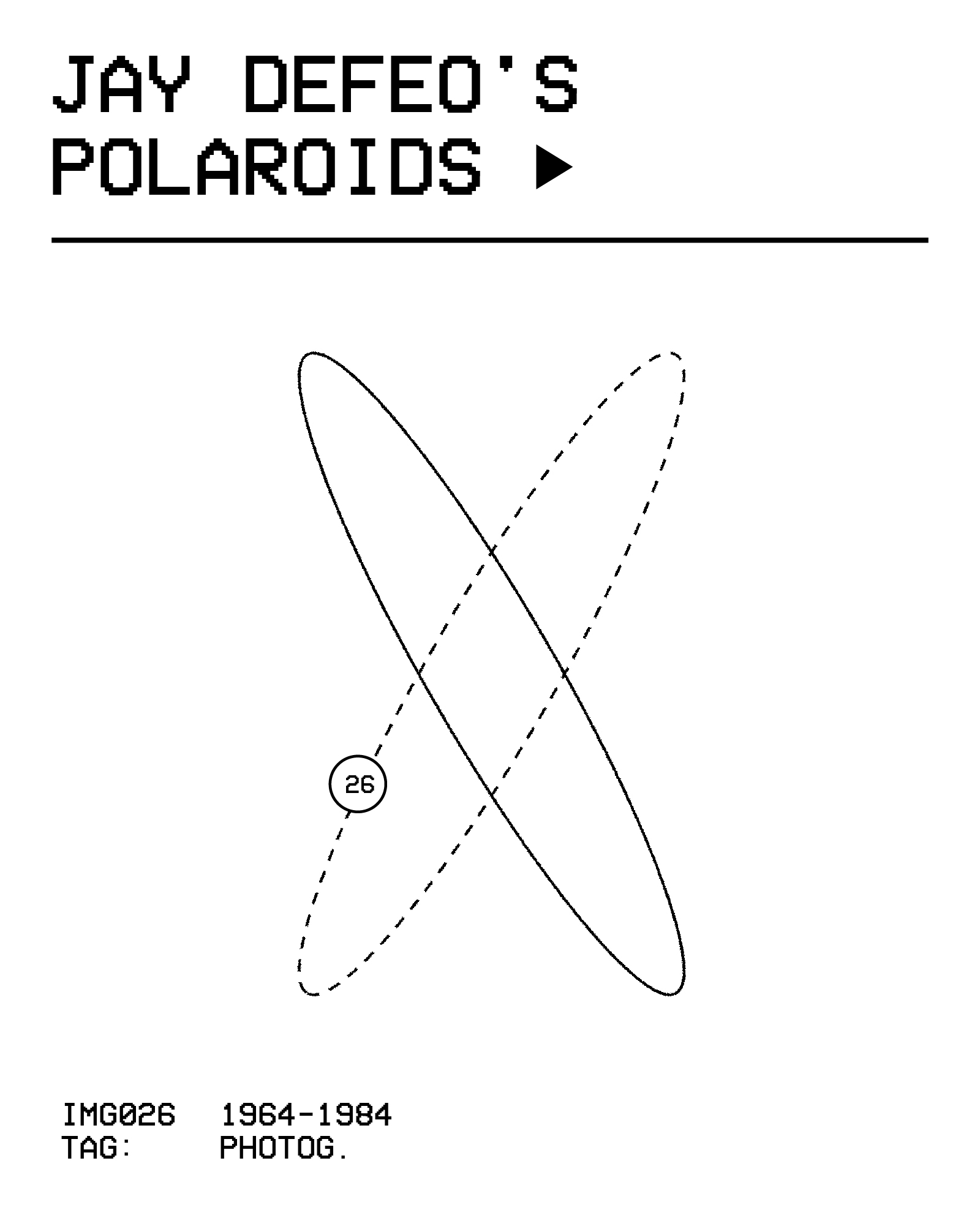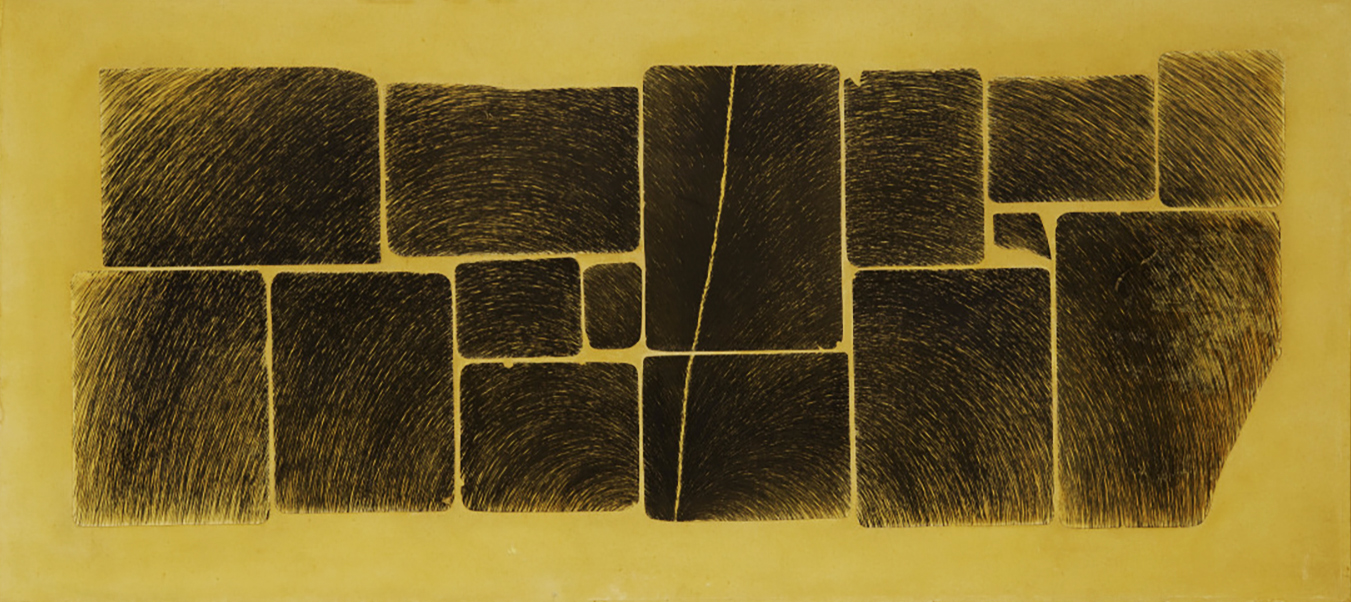
Napalm Sundae
Author
Nina Zurier
Decade
1950s 1960s 1970s 1980s 1990s
Tags
Activism Antiwar Painting Poetry Vietnam
Rebecca Solnit, in her 1990 book Secret Exhibition: Six California Artists of the Cold War Era, writes of Wally Hedrick: “It is now possible to say that Hedrick was ahead of his time: the first American to protest the Vietnam War, the artist to paint flags before Jasper Johns painted flags, who made kinetic junk sculpture before Tinguely did. Hedrick was a forerunner of Pop Art, Bad Painting, Neo-Expressionism, and image appropriation. It might be more useful to view Hedrick as an artist who was of his time in a unique way, a maverick whose responses to the world showed it in a different light.”
Hedrick was drafted against his will to fight in the Korean War. He returned to San Francisco in 1952 and started hanging out in North Beach and at SFAI. He eventually enrolled in classes, and began teaching shortly after he graduated. In 1954, Hedrick—along with David Simpson, Hayward King, John Allen Ryan, Deborah Remington, and Jack Spicer—founded The Six Gallery. Hedrick approached Allen Ginsberg in mid-1955 and asked him to organize a poetry reading at the gallery. It took place on October 7, with Ginsberg’s first reading of “Howl.” An account of the night can be found in Jack Kerouac’s novel The Dharma Bums. Howl was written in Berkeley, while Ginsberg was briefly enrolled as a student at UC Berkeley.
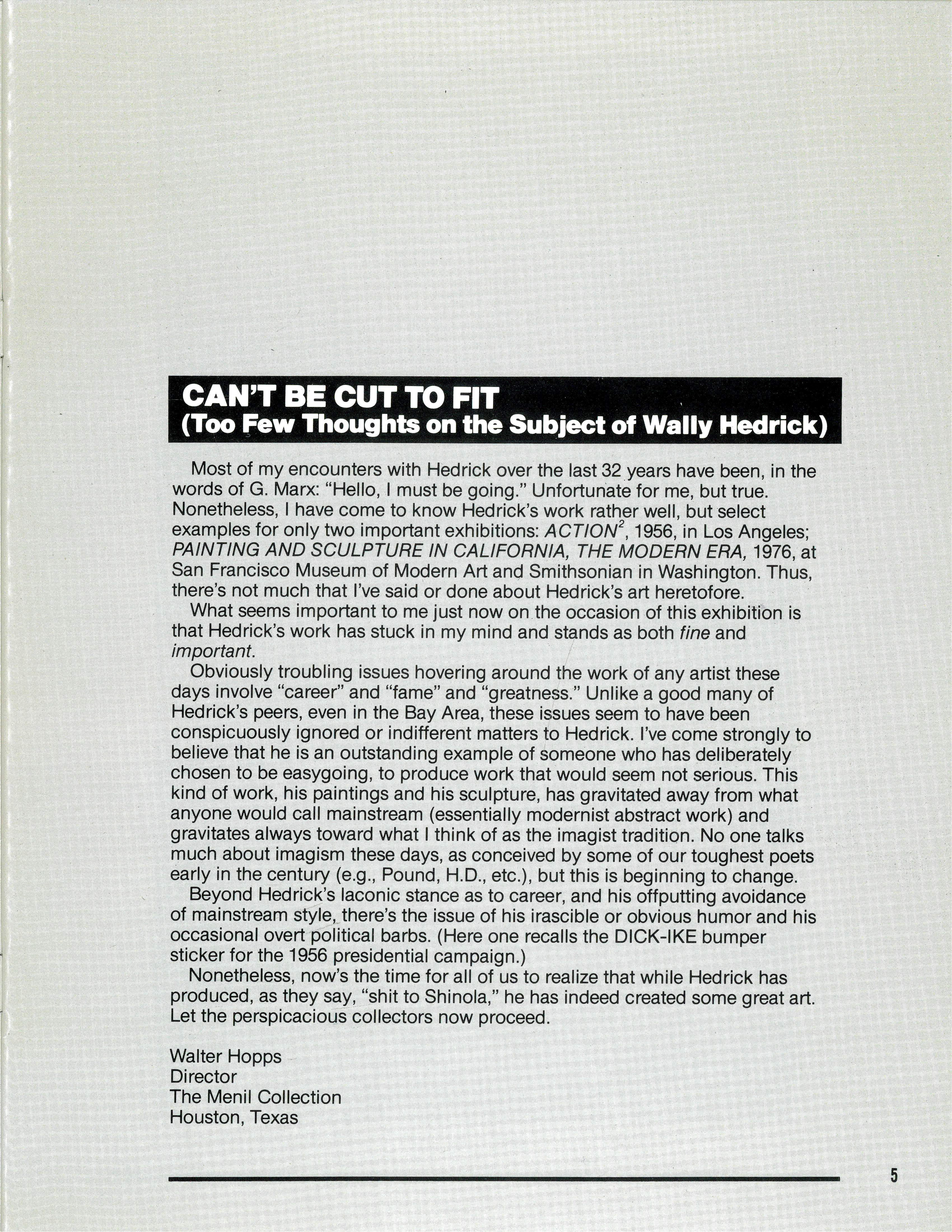
As a teenager in the late 1950s, Jerry Garcia studied painting at SFAI with Hedrick and Elmer Bischoff. Hedrick introduced him to Kerouac and acoustic blues guitar. In the introduction to Jerry Garcia: The Collected Artwork (2007, p. xviii), Garcia says: “Wally taught me that art is not only something you do, but something you are.”
In 1957, Hedrick began work on the series he called Black Paintings. He covered his own paintings—and according to rumors, those of others on occasion—with black paint, applying several layers corresponding to successive wars: Vietnam (1955–75), Gulf War (1990–91), Iraq (2002–11). Said Hedrick: “Since there is no way for me to affect any political decision, what I’ll do is I’ll deny Western Culture my contribution.”
In 1970 Hedrick canceled his classes at SFAI, telling students to go out and protest the war. By the fall of 1971 he had been fired. “For two semesters he put up a big black sign saying ‘Classes canceled until the end of the war,’” said his son, Max La Riviere-Hedrick, in Hedrick’s New York Times obituary (December 26, 2003).
Innovative curator Walter Hopps taught at SFAI in the summer of 1962 along with Hedrick. In the catalogue foreword for Hedrick’s 1985 Adaline Kent Award exhibition at SFAI, Hopps wrote: “Beyond Hedrick’s laconic stance as to career, and his off-putting avoidance of mainstream style, there’s the issue of his irascible or obvious humor and his occasional overt political barbs. (Here one recalls the DICK-IKE bumper sticker for the 1956 presidential campaign.)”
NZ
In 1957, Hedrick began work on the series he called Black Paintings. He covered his own paintings—and according to rumors, those of others on occasion—with black paint, applying several layers corresponding to successive wars: Vietnam (1955–75), Gulf War (1990–91), Iraq (2002–11). Said Hedrick: “Since there is no way for me to affect any political decision, what I’ll do is I’ll deny Western Culture my contribution.”
In 1970 Hedrick canceled his classes at SFAI, telling students to go out and protest the war. By the fall of 1971 he had been fired. “For two semesters he put up a big black sign saying ‘Classes canceled until the end of the war,’” said his son, Max La Riviere-Hedrick, in Hedrick’s New York Times obituary (December 26, 2003).
Innovative curator Walter Hopps taught at SFAI in the summer of 1962 along with Hedrick. In the catalogue foreword for Hedrick’s 1985 Adaline Kent Award exhibition at SFAI, Hopps wrote: “Beyond Hedrick’s laconic stance as to career, and his off-putting avoidance of mainstream style, there’s the issue of his irascible or obvious humor and his occasional overt political barbs. (Here one recalls the DICK-IKE bumper sticker for the 1956 presidential campaign.)”
NZ
